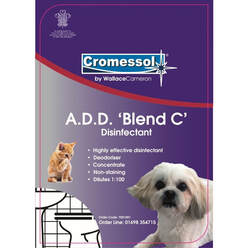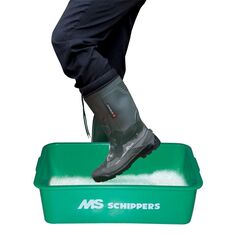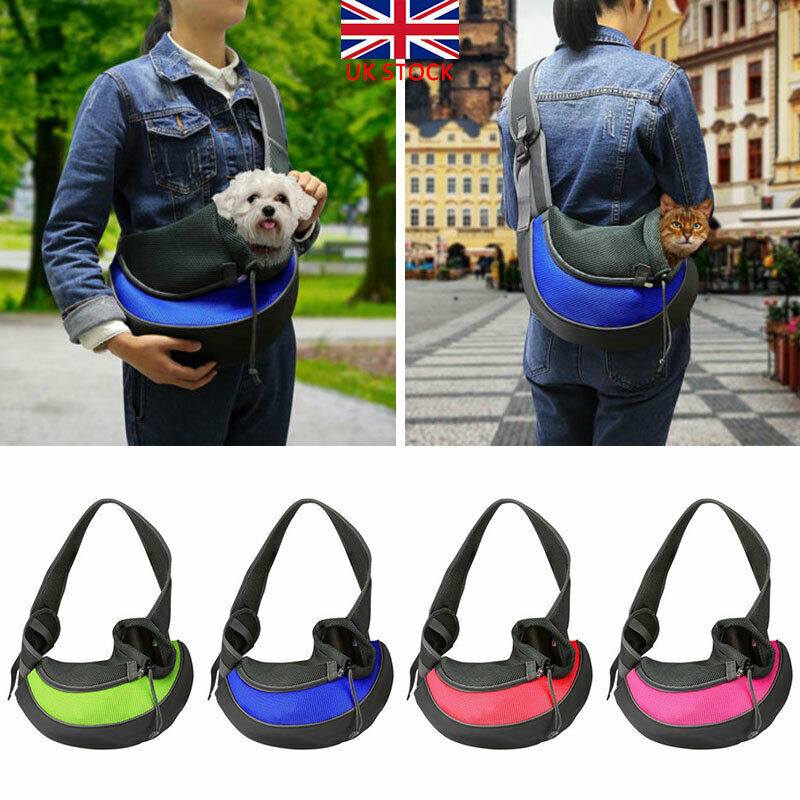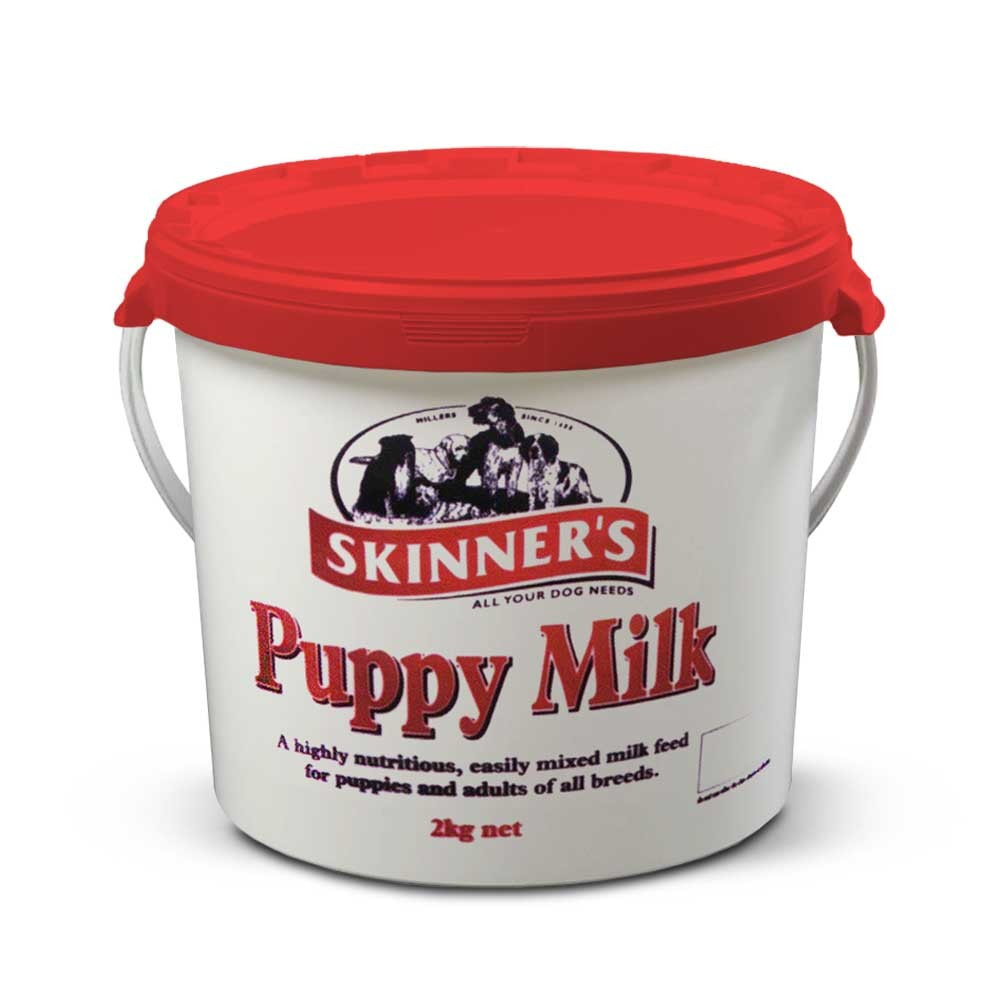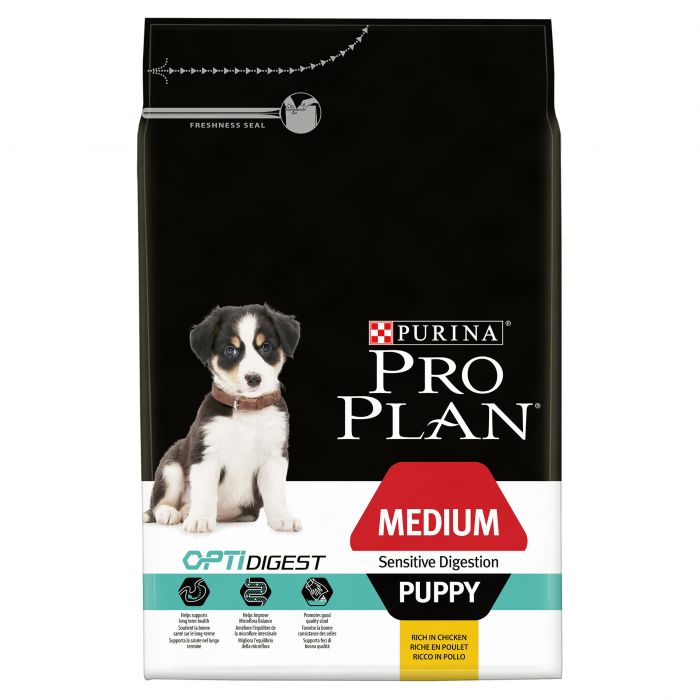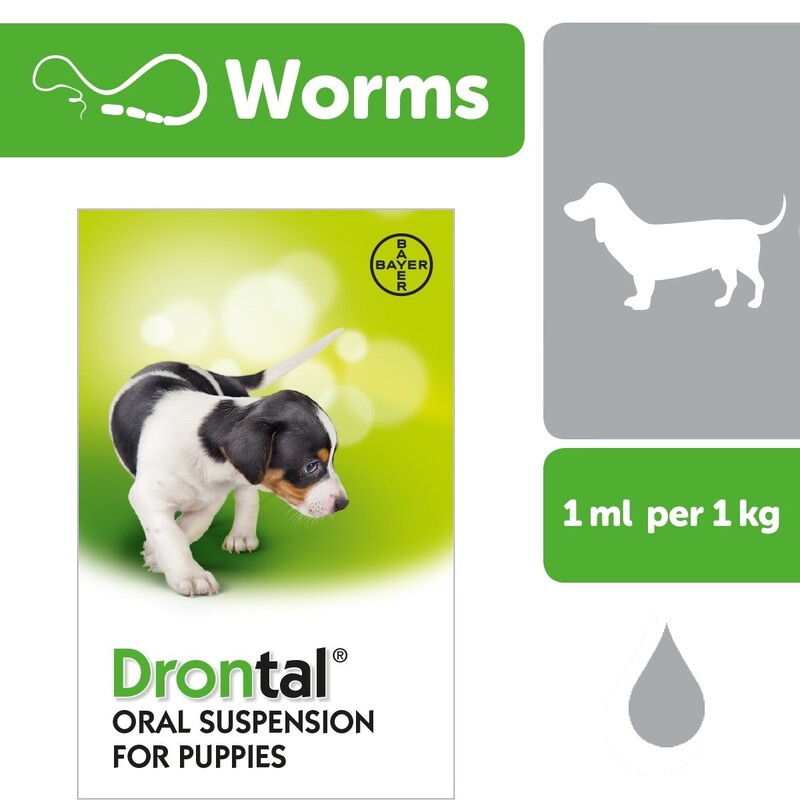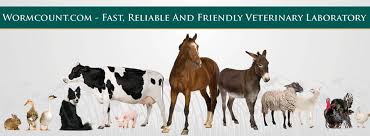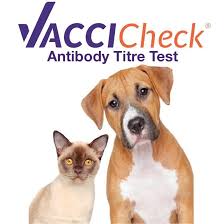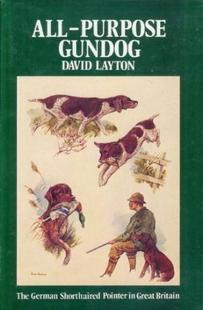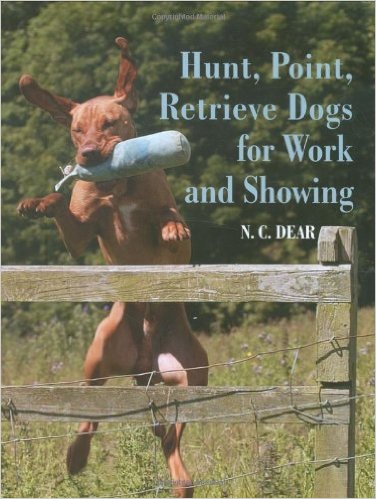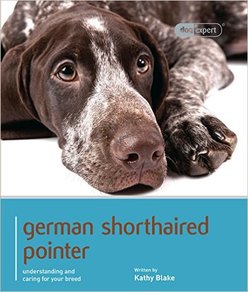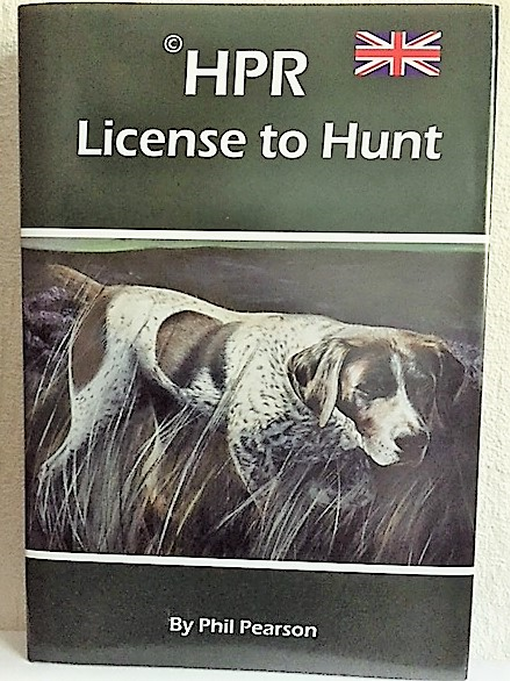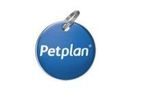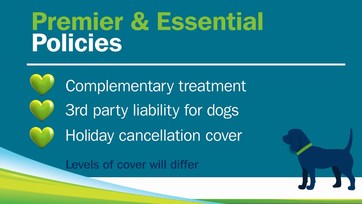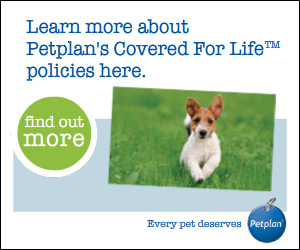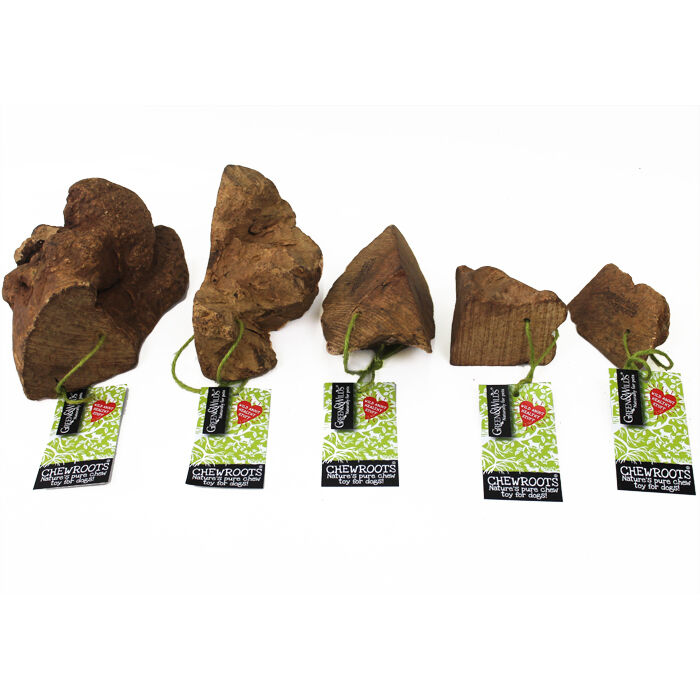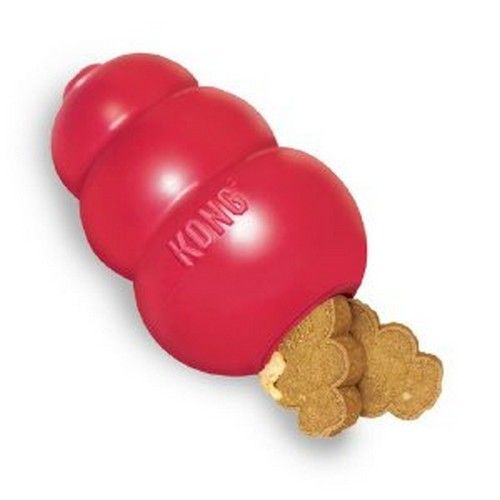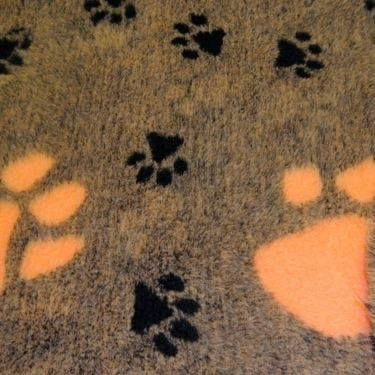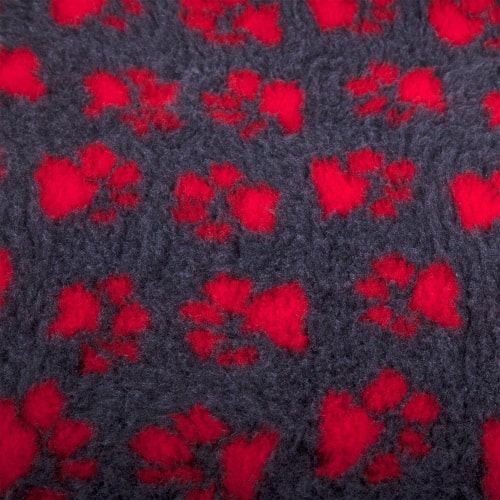Training and Care
Crate training your puppy
Crate training is a new concept for many, but is a very effective training tool for adult dogs and puppies. It may take a little time and effort to train your dog to use the crate, but it can prove useful in a variety of situations. For instance, if you have a new dog or puppy, a crate is a fantastic way of teaching it the boundaries of the house and keeping it safe. When you’re travelling in the car, visiting the vet or any other time you may need to confine your dog (eg. after surgery or if it has been injured), it’s much easier and safer if your dog has been trained to enjoy being in a crate.
How big should my crate be and what type should I get?
A crate should be big enough for your dog to stand up, turn around and lie down. Crates can be plastic (used on airlines), wire (collapsible, metal pens) or collapsible fabric crates. It is not recommended to leave your dog for long periods in a fabric crate unless you are certain that your dog will be happy and calm inside it and will not scratch its way out.
I don’t like the look of a crate! What will my dog think?
A crate is intended to be a ‘safe haven’ or ‘security blanket’ for the dog. By nature, dogs like small, enclosed spaces, especially when they are feeling a little bit unsure. By providing your dog with an area where it can ‘escape’ and know it won’t be bothered, it can readily seek out this area when it needs a bit of a break or time-out.
Training your dog to use the crate
The duration of crate training varies from dog to dog. It will depend on the dog’s age, temperament and past experiences. It is very important to remember that your crate should be associated only with something pleasant and training should always move at your dog’s pace. Always vary the length of time that your dog will spend in its crate, especially during training. This will prevent your dog from ‘expecting’ to be let out at a particular time and reduce any issues such as whining or scratching at the crate door.
Introduce your dog to the crate
Place the crate in a central part of the household (living room, TV room, etc). Make the crate inviting and comfortable for your dog. Usually, dogs will go over and investigate. When your dog goes near the crate, reward it by throwing a food treat into the crate or near its entrance. Repeat this every time the dog goes near the crate. If the dog settles down inside the crate, reward this behaviour either with your voice or with food rewards. You want the dog to view the crate as a wonderful place to be, full of goodies and fun. You don’t want to shut the door of the crate just yet. Your dog needs to understand that it can come and go as it pleases, therefore reinforcing it as a good place to be.
Feed your dog in the crate
Begin giving your dog its regular meals in the crate. Place the bowl inside the crate and encourage the dog to enter. If your dog readily enters the crate at dinner time, start asking it to go in and then place the food inside the crate.
As the dog becomes more comfortable eating in the crate, you can introduce closing the door. Start by closing the door as your dog eats its meal. Make sure you open it before the dog finishes its meal. As you progress, gradually leave the door closed for a few minutes at a time. Soon you should have a dog that will happily stay in its crate after a meal. If the dog whines; ignore the behaviour and try to reward it or let it out as soon as it is quiet. Next time, make sure the dog is in the crate for a slightly longer period of time.
Increase the length of time spent in the crate
Once your dog is happy in the crate for about 10 – 15 minutes after finishing its meal, you can start to confine it to the crate for longer periods. Get the dog into the crate using a command such as “crate” or “bed”. As the dog enters the crate, give it a treat, praise it and close the door. Quietly sit nearby for a few minutes and reward the dog for remaining calm and happy. You might even want to open the door and give the dog a rewarding treat-dispensing toy such as a Kong. Continue with your daily activities and return regularly to reward the dog, either verbally or with a food treat, for its calm behaviour inside the crate.
Start with short sessions and gradually increase the length of time that you leave the dog inside the crate. This may take several days or weeks.
Crating your dog at night
Once your dog is happy spending time in its crate with you around, you can introduce it to crating at night. Make sure your dog has toys or treat-dispensing toys with it to initially settle it into the routine. Keep the crate in a familiar, central area so the dog feels comfortable and settled. With young puppies or older dogs you may need to take them out for toilet breaks during the night. By making the crate a ‘fun’ and enjoyable place to be, night time crating should be an easy transition.
Potential problems
Too much time in the crate
Be careful that your puppy doesn’t spend too much time in its crate. While it is a fantastic tool for toilet training puppies and preventing destruction, a dog of any age should not spend all day in a crate while you are at work and again when you go to bed. This can affect your dog’s muscle development and condition. Young puppies shouldn’t spend more than 2-3 hours in the crate without a toilet break as they cannot last that long without relieving themselves.
Whining
If your dog begins whining in its crate, the best thing to do is ignore it. For a young puppy, whining may occur because it needs to relieve itself, so quietly take it out to the toilet on a lead, making sure not to play with it. Place it back into its crate once it has gone to the toilet. Remember that any sort of interaction, positive or negative, will be a ‘reward’ to the dog, so ignoring the whining is best. However, make sure that you reward the dog appropriately when it has settled and is quiet. Using a towel or sheet to cover the crate if the whining persists can also help settle the dog.
By following these steps, you can train your dog to not only love its crate, but also see it as a safe haven. Your dog’s crate can be a place to escape for a much-needed rest, a break from kids or other dogs, and even a portable home that will always be familiar no matter where you are.
Courtesy of RSPCA Victoria
How big should my crate be and what type should I get?
A crate should be big enough for your dog to stand up, turn around and lie down. Crates can be plastic (used on airlines), wire (collapsible, metal pens) or collapsible fabric crates. It is not recommended to leave your dog for long periods in a fabric crate unless you are certain that your dog will be happy and calm inside it and will not scratch its way out.
I don’t like the look of a crate! What will my dog think?
A crate is intended to be a ‘safe haven’ or ‘security blanket’ for the dog. By nature, dogs like small, enclosed spaces, especially when they are feeling a little bit unsure. By providing your dog with an area where it can ‘escape’ and know it won’t be bothered, it can readily seek out this area when it needs a bit of a break or time-out.
Training your dog to use the crate
The duration of crate training varies from dog to dog. It will depend on the dog’s age, temperament and past experiences. It is very important to remember that your crate should be associated only with something pleasant and training should always move at your dog’s pace. Always vary the length of time that your dog will spend in its crate, especially during training. This will prevent your dog from ‘expecting’ to be let out at a particular time and reduce any issues such as whining or scratching at the crate door.
Introduce your dog to the crate
Place the crate in a central part of the household (living room, TV room, etc). Make the crate inviting and comfortable for your dog. Usually, dogs will go over and investigate. When your dog goes near the crate, reward it by throwing a food treat into the crate or near its entrance. Repeat this every time the dog goes near the crate. If the dog settles down inside the crate, reward this behaviour either with your voice or with food rewards. You want the dog to view the crate as a wonderful place to be, full of goodies and fun. You don’t want to shut the door of the crate just yet. Your dog needs to understand that it can come and go as it pleases, therefore reinforcing it as a good place to be.
Feed your dog in the crate
Begin giving your dog its regular meals in the crate. Place the bowl inside the crate and encourage the dog to enter. If your dog readily enters the crate at dinner time, start asking it to go in and then place the food inside the crate.
As the dog becomes more comfortable eating in the crate, you can introduce closing the door. Start by closing the door as your dog eats its meal. Make sure you open it before the dog finishes its meal. As you progress, gradually leave the door closed for a few minutes at a time. Soon you should have a dog that will happily stay in its crate after a meal. If the dog whines; ignore the behaviour and try to reward it or let it out as soon as it is quiet. Next time, make sure the dog is in the crate for a slightly longer period of time.
Increase the length of time spent in the crate
Once your dog is happy in the crate for about 10 – 15 minutes after finishing its meal, you can start to confine it to the crate for longer periods. Get the dog into the crate using a command such as “crate” or “bed”. As the dog enters the crate, give it a treat, praise it and close the door. Quietly sit nearby for a few minutes and reward the dog for remaining calm and happy. You might even want to open the door and give the dog a rewarding treat-dispensing toy such as a Kong. Continue with your daily activities and return regularly to reward the dog, either verbally or with a food treat, for its calm behaviour inside the crate.
Start with short sessions and gradually increase the length of time that you leave the dog inside the crate. This may take several days or weeks.
Crating your dog at night
Once your dog is happy spending time in its crate with you around, you can introduce it to crating at night. Make sure your dog has toys or treat-dispensing toys with it to initially settle it into the routine. Keep the crate in a familiar, central area so the dog feels comfortable and settled. With young puppies or older dogs you may need to take them out for toilet breaks during the night. By making the crate a ‘fun’ and enjoyable place to be, night time crating should be an easy transition.
Potential problems
Too much time in the crate
Be careful that your puppy doesn’t spend too much time in its crate. While it is a fantastic tool for toilet training puppies and preventing destruction, a dog of any age should not spend all day in a crate while you are at work and again when you go to bed. This can affect your dog’s muscle development and condition. Young puppies shouldn’t spend more than 2-3 hours in the crate without a toilet break as they cannot last that long without relieving themselves.
Whining
If your dog begins whining in its crate, the best thing to do is ignore it. For a young puppy, whining may occur because it needs to relieve itself, so quietly take it out to the toilet on a lead, making sure not to play with it. Place it back into its crate once it has gone to the toilet. Remember that any sort of interaction, positive or negative, will be a ‘reward’ to the dog, so ignoring the whining is best. However, make sure that you reward the dog appropriately when it has settled and is quiet. Using a towel or sheet to cover the crate if the whining persists can also help settle the dog.
By following these steps, you can train your dog to not only love its crate, but also see it as a safe haven. Your dog’s crate can be a place to escape for a much-needed rest, a break from kids or other dogs, and even a portable home that will always be familiar no matter where you are.
Courtesy of RSPCA Victoria
Basic training tips for your new puppy
From the moment you collect your puppy you start training and there is no strict timetable as all dogs progress at different speeds. All training is done gently, with consistency, patience but most of all with kindness. The puppy first learns its new name through 'play training' and that magic word 'NO'. Introduce the recall by holding your arms outstretched and by using the command 'COME' giving the puppy loads of praise when it does come. The sit is taught by holding the puppy’s food above its head and when it sits (which it must do to look up at its food bowl) you say the word 'SIT' and put the flat of you hand up in the air. If the puppy is progressing well introduce the whistle, alternating with verbal or hand signals, with rapid pips for come (so pup, pup, pup becomes peep, peep, peep) and a long blast for sit.
You should also start heelwork on lead in order to teach the puppy the heel position, which should be with its head just in front of your leg. I use a very light material slip lead about 1cm wide and keep putting this on and taking it off the puppy. If the puppy is OK with this game I gently stand up and start to walk saying 'HEEL'. Usually the puppy follows for a few seconds and then dashes off at which point I stand stock still and make no attempt to pull or check the lead. Quickly bend down and recall the puppy giving lost of praise and encouragement. Repeat the procedure, if the puppy is getting in any way upset stop and try again another time.
Very quickly an intelligent puppy will learn that it is creating the situation with the tight lead and not you. In three or four days, using very short sessions, your puppy will have learnt never to pull on the lead again. Praise the puppy whenever it is in the correct position and say no when it is not.
Introduce water as soon as you can by letting the puppy play in and near shallow water, preferably in the company of an older dog. Gradually increase the depth of water available for play BUT make no attempt at this stage to retrieve from water, just let the puppy play.
You should also start heelwork on lead in order to teach the puppy the heel position, which should be with its head just in front of your leg. I use a very light material slip lead about 1cm wide and keep putting this on and taking it off the puppy. If the puppy is OK with this game I gently stand up and start to walk saying 'HEEL'. Usually the puppy follows for a few seconds and then dashes off at which point I stand stock still and make no attempt to pull or check the lead. Quickly bend down and recall the puppy giving lost of praise and encouragement. Repeat the procedure, if the puppy is getting in any way upset stop and try again another time.
Very quickly an intelligent puppy will learn that it is creating the situation with the tight lead and not you. In three or four days, using very short sessions, your puppy will have learnt never to pull on the lead again. Praise the puppy whenever it is in the correct position and say no when it is not.
Introduce water as soon as you can by letting the puppy play in and near shallow water, preferably in the company of an older dog. Gradually increase the depth of water available for play BUT make no attempt at this stage to retrieve from water, just let the puppy play.
A must watch to future proof your new pup against dog on dog aggression - click link then press demo to watch (approx 37 minutes)
Exercise and your puppy
Every dog owner has a duty of care to make sure that their dog gets at least one walk every day. Unlike most activities dog walking is something that the whole family can enjoy and better still, it doesn't cost anything at all.
Puppy exercising
Puppies need much less exercise than fully-grown dogs. If you over-exercise a growing puppy you can overtire it and damage its developing joints, causing early arthritis. A good rule of thumb is a ratio of five minutes exercise per month of age (up to twice a day) until the puppy is fully grown, i.e. 15 minutes (up to twice a day) when three months old, 20 minutes when four months old etc. Once they are fully grown, they can go out for much longer.
It is important that puppies and dogs go out for exercise every day in a safe and secure area, or they may become frustrated. Time spent in the garden (however large) is no substitute for exploring new environments and socialising with other dogs. (Make sure your puppy is trained to recall so that you are confident that he will return to you when called).
You should never exercise your puppy on a full stomach as this can contribute to bloat.
Who is it suitable for?
All dogs and dog owners can and should get walking. The government recommends that we get at least 30 minutes of exercise each day and this is something that everybody can achieve, and go beyond, on a daily dog walk. Dogs' exercise needs vary according to the breed that you have but every dog should have at least one walk a day, often two. Use our Breed Information Centre to find out more about the exercise needs of your chosen breed.
Puppy and dog walking tips © Dan Miller (Courtesy of the Kennel Club)
Puppy exercising
Puppies need much less exercise than fully-grown dogs. If you over-exercise a growing puppy you can overtire it and damage its developing joints, causing early arthritis. A good rule of thumb is a ratio of five minutes exercise per month of age (up to twice a day) until the puppy is fully grown, i.e. 15 minutes (up to twice a day) when three months old, 20 minutes when four months old etc. Once they are fully grown, they can go out for much longer.
It is important that puppies and dogs go out for exercise every day in a safe and secure area, or they may become frustrated. Time spent in the garden (however large) is no substitute for exploring new environments and socialising with other dogs. (Make sure your puppy is trained to recall so that you are confident that he will return to you when called).
You should never exercise your puppy on a full stomach as this can contribute to bloat.
Who is it suitable for?
All dogs and dog owners can and should get walking. The government recommends that we get at least 30 minutes of exercise each day and this is something that everybody can achieve, and go beyond, on a daily dog walk. Dogs' exercise needs vary according to the breed that you have but every dog should have at least one walk a day, often two. Use our Breed Information Centre to find out more about the exercise needs of your chosen breed.
Puppy and dog walking tips © Dan Miller (Courtesy of the Kennel Club)
Bio Security for Un-vaccinated Puppies
Safety measures to protect your new puppy
In the event you may have an un-vaccinated puppy in your household, it is important to understand what threats are posed and also what measures you can easily take to protect the health of your puppy.
The Threat - most viral infections are either air born or spread by actual contact. That is to say an infected animal has to emit the virus by breath or secreta, and the unprotected animal either breaths in or absorbs the deposited virus through skin or mucous membranes.
Puppies receive maternal antibodies from their mothers milk in the first few hours of life, which offers them borrowed immunity. These maternal antibodies protect the puppy from all the viruses that their mother is immune to. However over the first few weeks of life this diminishes, and by 8 weeks old some pups will be losing their protection, and by 10 weeks of age almost all pups have lost that initial protection and therefore vulnerable to infection. This is why a normal vaccination programme begins at 8 weeks old and completing at 10 weeks so that it allows for continuous protection .
In the event that a puppy cannot be inoculated at the appropriate time, or is aged between 8 and 11 weeks old, it is better to assume the puppy may not be protected, and therefore take measures to avoid the pup coming in to contact with any dangerous infections.
Firstly, buy a good virucide disinfect such as Cromessol, click this link to purchase.
The Threat - most viral infections are either air born or spread by actual contact. That is to say an infected animal has to emit the virus by breath or secreta, and the unprotected animal either breaths in or absorbs the deposited virus through skin or mucous membranes.
Puppies receive maternal antibodies from their mothers milk in the first few hours of life, which offers them borrowed immunity. These maternal antibodies protect the puppy from all the viruses that their mother is immune to. However over the first few weeks of life this diminishes, and by 8 weeks old some pups will be losing their protection, and by 10 weeks of age almost all pups have lost that initial protection and therefore vulnerable to infection. This is why a normal vaccination programme begins at 8 weeks old and completing at 10 weeks so that it allows for continuous protection .
In the event that a puppy cannot be inoculated at the appropriate time, or is aged between 8 and 11 weeks old, it is better to assume the puppy may not be protected, and therefore take measures to avoid the pup coming in to contact with any dangerous infections.
Firstly, buy a good virucide disinfect such as Cromessol, click this link to purchase.
|
|
Buy a large plastic cat litter tray for every outside entrance to your home and garden, these should be placed at the side of each entrance and about 1.5cm of diluted disinfectant poured into it.
Anyone entering your premises should be asked to step into it or shoes left outside, particularly if well soiled. Anyone who has outer clothes should take them off at the door and place them out of pups reach, or any clothes that may have been touched by other owners animals should be removed and again kept away from pup. Clothing that has been worn on a dog walk should be kept well away from pup. Any family animals walked during this vulnerable period should be walked away from high usage dog walking areas. Again, before being brought back into the home you should dip their feet into the diluted virucide and wipe them down with a cloth soaked in the same solution. If transporting your puppy in your vehicle, again surfaces should be wiped down prior to the puppy getting in. |
If you have the benefit of a safe area for your puppy to play, such as your own garden, just ensure the bio security is observed and this should avoid any undue risks. Own family animals can mix quite safely so along as these measures followed.
Early Socialising the Unvaccinated Pup
Getting out and about without the dangers
|
A puppy carrier is a very useful tool for early socialising your unvaccinated puppy. It will enable you to take the puppy out and about getting them used to the sights and sounds of the outside world without the danger of coming into contact with anything harmful.
It also is a great way of enabling a long walk with other family dogs that the little puppy could not physically manage, as you can pop them in the bag periodically to save their little legs. I have found one of the best places to buy these cheaply is Ebay, just type in "sling puppy carrier" and you will find a great assortment, just make sure you buy from a British supplier as the delivery time is so much quicker. |
Feeding
Our pups are fed on these excellent foods
|
Skinner’s Puppy Milk is a highly nutritious, easily mixed milk feed which can help to ensure the health and vitality of growing puppies and bitches before and after whelping. Skinner’s Puppy Milk is made from wholesome cow’s milk, with some of the hard-to-digest fat removed then supplemented with all the vitamins, minerals and trace elements needed for healthy growth. Lactose, or milk sugar provides energy for growth, whilst a balance of protein is essential for bone and muscle development. Calcium and phosphorous help to form healthy bones and teeth, whilst a range of trace elements ensure the proper working of the immune system
Click here to order Skinners Puppy Milk
|
|
Purina Pro Plan Puppy Medium Sensitive Digestion Optidigest with Chicken Dry Food has a selected combination of nutrients that help support your puppy's sensitive digestion and therefore promotes good health. The Optidigest in this sensitive puppy food improves the balance of microflora in your puppy's stomach through a prebiotic source, helping solve a common cause of sensitive digestion. It also promotes a healthier faecal consistency, helping keep your puppy on track to good health.
Click here to order Proplan Puppy Food
|
Fleas, Worms & Vaccinations
Recommended wormer for puppies
|
Drontal Puppy Suspension has been developed for the effective treatment of roundworm infections including Ascarids, Whipworms and Hookworms, in puppies and young dogs up to one year of age.
Puppies can easily contract worms from their mother and are often born with them. Drontal Puppy Suspension works by using a fixed combination of pyrantel and febantel that act in synergy to kill internal worms quickly and efficiently to keep your puppy healthy and happy. Each 1ml of Drontal Puppy Suspension contains 5.0mg Pyrantel (as Pyrantel Embonate 14.4mg) and 15mg Febantel. It is recommended that treatment should be started at 2 weeks old and then should be given every 2 weeks until your pet reaches 12 weeks of age or until weaning. Dosage: For oral administration only 1ml suspension/kg body weight can be given directly to the animal or mixed in with their normal feed. No special dietary measures are necessary. Click here to buy Drontal Puppy Wormer |
Advice on routine worming
Throughout the media we are constantly being bombarded with information telling us that worms are dangerous and all around us and we MUST protect against them by worming our dogs on a regular basis, some Veterinarians suggesting as often as monthly. This is not only costly exercise but does it do your pet any harm? Is it really necessary? One thing is for certain the winner here is the Vet and the drug company.....but is it at the expense of your dog?
Wormer will never prevent an infestation of worms, it can only ever get rid of an infestation, so a sensible way to protect your dog from unnecessary treatments is to use a worm screening kit. This can be purchased easily and covers most parasitic infections. Should you find your dog is burdened with worms then it is right and proper to worm him, but if he isnt, DON'T....its that simple.
Below is a link to a company that sells the kit, read their advice, buy the product.
Wormer will never prevent an infestation of worms, it can only ever get rid of an infestation, so a sensible way to protect your dog from unnecessary treatments is to use a worm screening kit. This can be purchased easily and covers most parasitic infections. Should you find your dog is burdened with worms then it is right and proper to worm him, but if he isnt, DON'T....its that simple.
Below is a link to a company that sells the kit, read their advice, buy the product.
Click here to buy kit
IMPORTANT NOTICE!
Insist on your Veterinarian using Nobivac Lepto 2 (or equivalent) and NOT Lepto 4 in the puppy's vaccination programme, as this newer version is currently associated with numerous serious adverse side effects and should be avoided.
Nobivac DHP + Nobivac Lepto 2 or Canigen DHP + Canigen Lepto 2
are recommended Vaccines to be used for the pup’s first vaccination program.
This is the rationale and protocol for vaccinations as per both Virbac and Nobivac, the manufacturers of these Vaccines, following verbal clarification between myself and the individual Companies; frustratingly you will find that individual vets sometimes vary their advice.
The mother will carry a certain amount of immunity against the individual diseases and will pass this immunity onto her pups, however there is no way of knowing how long this temporary maternal immunity will last or how much immunity she has passed on. Immunity post vaccine, is proven to be effective at 10 weeks in most cases, or at least the pup will begin the process of developing immunity. The Parvovirus part (caught from other dogs and environment) becomes effective at 1 week post 10 week vaccination and the Leptospirosis part (caught from rats) can take up to 3-4 weeks to become effective so care should be taken when walking the newly vaccinated puppy in areas where there may be a high population of rats or stagnant or standing water until a month has past, though it is acceptable to take a pup out 1 week following the 10 week vaccination. Bear in mind your puppy has come from a different area and like children will likely pick up every new bug in your area so try to keep clear of highly used and soiled areas for a little while and but encourage mixing with other well cared for and vaccinated dogs for the benefit of socialisation. In very rare cases, or within certain breeds and on occasion where pups produced from mothers with excessively high immunity they may not be entirely covered following the 10 week vaccine so it is therefore recommended that a booster be given at 16 weeks.
So in summary; for BEST PRACTICE the protocol listed below should be followed:
At 11 weeks the pup is allowed out in public areas, but avoid highly soiled areas and take care to avoid areas likely to have large population of rats or standing water.
At 14 weeks consider the pup to be fully vaccinated but introduce the pup carefully and slowly to new places and other dogs so they are not bombarded with every new bug all at once.
are recommended Vaccines to be used for the pup’s first vaccination program.
This is the rationale and protocol for vaccinations as per both Virbac and Nobivac, the manufacturers of these Vaccines, following verbal clarification between myself and the individual Companies; frustratingly you will find that individual vets sometimes vary their advice.
The mother will carry a certain amount of immunity against the individual diseases and will pass this immunity onto her pups, however there is no way of knowing how long this temporary maternal immunity will last or how much immunity she has passed on. Immunity post vaccine, is proven to be effective at 10 weeks in most cases, or at least the pup will begin the process of developing immunity. The Parvovirus part (caught from other dogs and environment) becomes effective at 1 week post 10 week vaccination and the Leptospirosis part (caught from rats) can take up to 3-4 weeks to become effective so care should be taken when walking the newly vaccinated puppy in areas where there may be a high population of rats or stagnant or standing water until a month has past, though it is acceptable to take a pup out 1 week following the 10 week vaccination. Bear in mind your puppy has come from a different area and like children will likely pick up every new bug in your area so try to keep clear of highly used and soiled areas for a little while and but encourage mixing with other well cared for and vaccinated dogs for the benefit of socialisation. In very rare cases, or within certain breeds and on occasion where pups produced from mothers with excessively high immunity they may not be entirely covered following the 10 week vaccine so it is therefore recommended that a booster be given at 16 weeks.
So in summary; for BEST PRACTICE the protocol listed below should be followed:
- 8 weeks
- 10 weeks (not to be given less than 2 weeks or more than 4 weeks after initial vaccination)
- 16 weeks
At 11 weeks the pup is allowed out in public areas, but avoid highly soiled areas and take care to avoid areas likely to have large population of rats or standing water.
At 14 weeks consider the pup to be fully vaccinated but introduce the pup carefully and slowly to new places and other dogs so they are not bombarded with every new bug all at once.
This is one article of many to question the efficacy of blindly vaccinating on an annual basis, please read and consider the points raised.
Overview of the Dangers of Annual Dog Vaccinations
For years we have been told to vaccinate our pets annually. We are told we must never miss a vaccine appointment or our pets could fall ill and die of the diseases covered by these vaccinations.
If I were to ask you how many times you have had a TB, Polio, Smallpox or MMR jabs. In most cases you would reply that you had only had them once, or in the case of MMR normally twice.
This is from the UK Government's vaccine protocols for humans:
“Live vaccines Live attenuated virus vaccines, such as MMR, usually promote a full, long-lasting antibody response after one or two doses.
Now full and long lasting sounds to me longer than a year?
The core vaccines dogs and cats get are live vaccines. Core vaccines show an excellent correlation between the presence of antibody and protective immunity to a disease, and have a long DOI (Duration of Immunity). Core annual vaccinations have been a cash cow to both the vaccine companies and the Vets that dispense them.
As long ago as 2004 a group of vets issued a Health Warning 30 leading UK based vets got together to issue a warning that said.
"The present practice of marketing vaccinations for companion animals may constitute fraud by misrepresentation, fraud by silence and theft by deception"
They should have added "and a threat to the life and wellbeing of your pet". That was 11 years ago and still I see some of my clients vaccination certificates stamped with annual core vaccines. Where is the science that says dogs and cats need vaccinations regularly? There is none.
That is against the BVAs guidelines (British Veterinary Association) The biggest Vaccine supplier in the UK is Intervet. It would normally be their vaccines used when you visit your Vet. Intervet clearly state, and have done for some time. The main core vaccines should not be more than once every three to four years.
That is a fairly bald statement. It does not suggest that the Vets should decide for themselves when they should vaccinate. I will repeat. Should not be more than once every three to four years. The BVA (British Veterinary Association, whom I contacted, stated to me
"The duration of immunity (DOI) for each medicine or product is different and veterinary surgeons must keep up to date with this information." In 2010 the Veterinary Medicines Directorate (VMD) wrote a letter to the two major veterinary publications Veterinary Record and Veterinary Times, explaining that recent trends in data mean that the DOIs for a number of common vaccinations (canine distemper, parvovirus and adenovirus) are now three to four years. This is information that veterinary surgeons will be aware of and will be following."
Therefore the Vets that are administering annual core vaccinations are clearly not following their professional body or the vaccine company’s guidelines. What would happen if a GP did that?
So Why Should it Concern Us
Vaccinations are believed to over stimulate the immune system, causing it to malfunction.
They are contraindicated for dogs with already suppressed immune systems. Modified live Vaccine (MLVs) have the potential to revert to the virulent form of the disease. Also indicated are the following:
Autoimmune haemolytic anaemia
A dreadful disease that usually kills a dog within days. Progress of the disease closely resembles the last stages of AIDS. Scientists in America published a paper during 1997, saying that there is strong evidence to link this disease with ANY vaccine.
Cancers
Dr Denis W Macey was reported in an American veterinary paper as saying that up to 22,000 cats develop cancer at the site of vaccination every year in the USA.
American cats are now being vaccinated in the tail or leg so that they can cut it off when it becomes cancerous.
Genetic defects
Dr Larry Glickman at Purdue University has found that routinely vaccinated dogs develop auto-antibodies to a wide range of their own biochemicals, including DNA. The significance of this study is immense. It means that vaccines cause genetic defects.
Thyroid disease
Can be caused by vaccines, and it then becomes an inheritable condition. Once a dog has underlying thyroid disease, he or she only needs a trigger - from a vaccine, an environmental pollutant, from stress, or from dietary inadequacies - to develop full-blown life-threatening autoimmune diseases.
Leukaemia
Dr Jean Dodds, one of the world's foremost experts in canine vaccine reactions, writes: "Recent vaccinations with single or combination modified live virus (MLV) vaccines are increasingly recognised contributors to immune-mediated blood diseases, bone marrow failure, and organ dysfunction." ( Dr Dodds lists leukaemia, thyroid disease, Addison's disease, diabetes, and lymphoma as diseases that can be triggered by vaccines.
Parvovirus
Yes, parvovirus was created by vaccines. This disease didn't exist prior to the 1970s. In fact, scientists tell us it was created by vaccine manufacturers who cultured the distemper vaccine on cat kidneys that were infected with feline enteritis.
This cat-enteritis-diseased distemper vaccine was then injected into dogs, and parvovirus suddenly reared its ugly head around the world at the same time. A naturally occurring epidemic would spread slowly across continents. Parvovirus appeared with a big bang, in line with multi-national vaccine companies distribution policies.
Arthritis
There are numerous scientific studies linking arthritis with vaccination. Vaccine components have even been isolated in the bones of arthritis sufferers post vaccination.
Allergies
There are many, many research papers showing a link between allergies and vaccines. Animals with a genetic predisposition to allergies ('people' from families with a history of irritable bowel syndrome/Crohns disease/enteritis, asthma, hay fever, eczema, attention deficit disorder, and so on), can become more allergic, or become highly sensitised, when you inject foreign proteins (serums and organ tissue contained in vaccines) into them. Flea bite allergy? Apparently that's caused totally by vaccine damage.
There is something called a Titer test is pronounced TIGHT er. Also called serology and antibody testing, is a simple blood test to ensure that a dog or cat has responded to vaccination with a specific “core” virus vaccine. If those antibodies are there then then there is no reason to re-vaccinate your pets.
My protocol is this: vaccination at 8 and 10.5 weeks of age then a booster at one year old. No more vaccinations until my dog reaches 5 years old. Then I have a Titer test , if that shows the necessary antibodies, then I do not have any more tests or vaccinations. I have never had a dog die of any of the diseases covered in the core or none core vaccinations. New vets are required to swear a solemn oath when they finish their degree “primum non nocere” "first do no harm”
I am not certain all of them are following that creed. I have written an in depth article for those that which to research much deeper into this problem and it can be found here. That also covers non-core vaccines such as Leptospirosis and dog flu. This is a disgrace on an International level yet it appears no newspapers and news agencies are interested in the systematic over vaccinating of our pets. Purely for the god of profit, not the pets best interest
In Depth the Dangers of Over Vaccination of Cats and Dogs
Stan Rawlinson March 2015 (courtesy of the Doglistener)
Overview of the Dangers of Annual Dog Vaccinations
For years we have been told to vaccinate our pets annually. We are told we must never miss a vaccine appointment or our pets could fall ill and die of the diseases covered by these vaccinations.
If I were to ask you how many times you have had a TB, Polio, Smallpox or MMR jabs. In most cases you would reply that you had only had them once, or in the case of MMR normally twice.
This is from the UK Government's vaccine protocols for humans:
“Live vaccines Live attenuated virus vaccines, such as MMR, usually promote a full, long-lasting antibody response after one or two doses.
Now full and long lasting sounds to me longer than a year?
The core vaccines dogs and cats get are live vaccines. Core vaccines show an excellent correlation between the presence of antibody and protective immunity to a disease, and have a long DOI (Duration of Immunity). Core annual vaccinations have been a cash cow to both the vaccine companies and the Vets that dispense them.
As long ago as 2004 a group of vets issued a Health Warning 30 leading UK based vets got together to issue a warning that said.
"The present practice of marketing vaccinations for companion animals may constitute fraud by misrepresentation, fraud by silence and theft by deception"
They should have added "and a threat to the life and wellbeing of your pet". That was 11 years ago and still I see some of my clients vaccination certificates stamped with annual core vaccines. Where is the science that says dogs and cats need vaccinations regularly? There is none.
That is against the BVAs guidelines (British Veterinary Association) The biggest Vaccine supplier in the UK is Intervet. It would normally be their vaccines used when you visit your Vet. Intervet clearly state, and have done for some time. The main core vaccines should not be more than once every three to four years.
That is a fairly bald statement. It does not suggest that the Vets should decide for themselves when they should vaccinate. I will repeat. Should not be more than once every three to four years. The BVA (British Veterinary Association, whom I contacted, stated to me
"The duration of immunity (DOI) for each medicine or product is different and veterinary surgeons must keep up to date with this information." In 2010 the Veterinary Medicines Directorate (VMD) wrote a letter to the two major veterinary publications Veterinary Record and Veterinary Times, explaining that recent trends in data mean that the DOIs for a number of common vaccinations (canine distemper, parvovirus and adenovirus) are now three to four years. This is information that veterinary surgeons will be aware of and will be following."
Therefore the Vets that are administering annual core vaccinations are clearly not following their professional body or the vaccine company’s guidelines. What would happen if a GP did that?
So Why Should it Concern Us
Vaccinations are believed to over stimulate the immune system, causing it to malfunction.
They are contraindicated for dogs with already suppressed immune systems. Modified live Vaccine (MLVs) have the potential to revert to the virulent form of the disease. Also indicated are the following:
Autoimmune haemolytic anaemia
A dreadful disease that usually kills a dog within days. Progress of the disease closely resembles the last stages of AIDS. Scientists in America published a paper during 1997, saying that there is strong evidence to link this disease with ANY vaccine.
Cancers
Dr Denis W Macey was reported in an American veterinary paper as saying that up to 22,000 cats develop cancer at the site of vaccination every year in the USA.
American cats are now being vaccinated in the tail or leg so that they can cut it off when it becomes cancerous.
Genetic defects
Dr Larry Glickman at Purdue University has found that routinely vaccinated dogs develop auto-antibodies to a wide range of their own biochemicals, including DNA. The significance of this study is immense. It means that vaccines cause genetic defects.
Thyroid disease
Can be caused by vaccines, and it then becomes an inheritable condition. Once a dog has underlying thyroid disease, he or she only needs a trigger - from a vaccine, an environmental pollutant, from stress, or from dietary inadequacies - to develop full-blown life-threatening autoimmune diseases.
Leukaemia
Dr Jean Dodds, one of the world's foremost experts in canine vaccine reactions, writes: "Recent vaccinations with single or combination modified live virus (MLV) vaccines are increasingly recognised contributors to immune-mediated blood diseases, bone marrow failure, and organ dysfunction." ( Dr Dodds lists leukaemia, thyroid disease, Addison's disease, diabetes, and lymphoma as diseases that can be triggered by vaccines.
Parvovirus
Yes, parvovirus was created by vaccines. This disease didn't exist prior to the 1970s. In fact, scientists tell us it was created by vaccine manufacturers who cultured the distemper vaccine on cat kidneys that were infected with feline enteritis.
This cat-enteritis-diseased distemper vaccine was then injected into dogs, and parvovirus suddenly reared its ugly head around the world at the same time. A naturally occurring epidemic would spread slowly across continents. Parvovirus appeared with a big bang, in line with multi-national vaccine companies distribution policies.
Arthritis
There are numerous scientific studies linking arthritis with vaccination. Vaccine components have even been isolated in the bones of arthritis sufferers post vaccination.
Allergies
There are many, many research papers showing a link between allergies and vaccines. Animals with a genetic predisposition to allergies ('people' from families with a history of irritable bowel syndrome/Crohns disease/enteritis, asthma, hay fever, eczema, attention deficit disorder, and so on), can become more allergic, or become highly sensitised, when you inject foreign proteins (serums and organ tissue contained in vaccines) into them. Flea bite allergy? Apparently that's caused totally by vaccine damage.
There is something called a Titer test is pronounced TIGHT er. Also called serology and antibody testing, is a simple blood test to ensure that a dog or cat has responded to vaccination with a specific “core” virus vaccine. If those antibodies are there then then there is no reason to re-vaccinate your pets.
My protocol is this: vaccination at 8 and 10.5 weeks of age then a booster at one year old. No more vaccinations until my dog reaches 5 years old. Then I have a Titer test , if that shows the necessary antibodies, then I do not have any more tests or vaccinations. I have never had a dog die of any of the diseases covered in the core or none core vaccinations. New vets are required to swear a solemn oath when they finish their degree “primum non nocere” "first do no harm”
I am not certain all of them are following that creed. I have written an in depth article for those that which to research much deeper into this problem and it can be found here. That also covers non-core vaccines such as Leptospirosis and dog flu. This is a disgrace on an International level yet it appears no newspapers and news agencies are interested in the systematic over vaccinating of our pets. Purely for the god of profit, not the pets best interest
In Depth the Dangers of Over Vaccination of Cats and Dogs
Stan Rawlinson March 2015 (courtesy of the Doglistener)
The sensible approach to avoid over vaccination
Why titre test?
The veterinary industry agrees that vaccines are necessary but the frequency in which they are administered is often debated. In particular, the recommendation to administer core vaccines to adult dogs and cats at 3 year intervals (or longer) rather than annually resulted in differences of opinions among veterinarians.
It has now been shown that duration of immunity after vaccination with MLV vaccines for most animals will be many years or a lifetime, based on challenge and serological studies (Schultz et al. 2010). If an animal already has a protective level of immunity, revaccination will not be required.
VacciCheck is a rapid and affordable option to check the titre levels for the core diseases that are vaccinated against. It provides easy to interpret results which determine whether the animal has a protective level of immune response or whether they need revaccination.
With high sensitivity and specificity, VacciCheck is designed to ensure that animals are protected whilst avoiding unncessary medical intervention.
This is supported by the World Small Animal Veterinary Association (WSAVA) Guidlines, which state that an animal that returns a positive titre has a protective level of immunity and therefore does not require revaccination.
The Benefits
There are a number of ways VacciCheck can be beneficial to determine a dog or cat's antibody titre levels of the 3 core diseases:
The veterinary industry agrees that vaccines are necessary but the frequency in which they are administered is often debated. In particular, the recommendation to administer core vaccines to adult dogs and cats at 3 year intervals (or longer) rather than annually resulted in differences of opinions among veterinarians.
It has now been shown that duration of immunity after vaccination with MLV vaccines for most animals will be many years or a lifetime, based on challenge and serological studies (Schultz et al. 2010). If an animal already has a protective level of immunity, revaccination will not be required.
VacciCheck is a rapid and affordable option to check the titre levels for the core diseases that are vaccinated against. It provides easy to interpret results which determine whether the animal has a protective level of immune response or whether they need revaccination.
With high sensitivity and specificity, VacciCheck is designed to ensure that animals are protected whilst avoiding unncessary medical intervention.
This is supported by the World Small Animal Veterinary Association (WSAVA) Guidlines, which state that an animal that returns a positive titre has a protective level of immunity and therefore does not require revaccination.
The Benefits
There are a number of ways VacciCheck can be beneficial to determine a dog or cat's antibody titre levels of the 3 core diseases:
- To determine when it is optimal to end the vaccine series
- After a dog or cat vaccination to indicate immunisation success was achieved
- To determine if a booster is required
Training your GSP
Recommended breed books, either version
|
Hunt, Point, Retrieve Dogs for Work & Show
Published by The Crowood Press Ltd ISBN-10: 1847970826 ISBN-13: 978-1847970824 |
The Pet Book Publishing Company Ltd (30 April 2014)
ISBN-10: 1906305811 ISBN-13: 978-1906305819 |
|
This book is a step by simple step book written for use in training an HPR gundog.
The author is a straightforward chap who is a qualified field trial judge and a successful competitor. Well worth a read, and his generosity means that for every book sold, your nominated breed rescue charity gets a donation from the proceeds! To buy direct from Phil Pearson, the author please click this link |
Excellent gundog training videos
Train your HPR the Professionals Way with expertly filmed and produced DVDs by Paul French Video
by Rory Major (click to purchase)
by Rory Major (click to purchase)
General Care
Why early spaying/castration is NOT the best thing for your dog
Health Implications in Early Spay and Neuter in Dogs 02/25/2013
Recent results from research funded by the AKC Canine Health Foundation have the potential to significantly impact recommendations for spaying and neutering dogs in the United States. Most dogs in the United States are spayed or neutered, and for years the procedures have been completed prior to maturity. The study, published in the prominent, open access journal PLOS One, suggests that veterinarians should be more cautious about the age at which they spay and neuter in order to protect the overall health of dogs.
A team of researchers led by Dr. Benjamin L. Hart at the University of California, Davis has completed the most detailed study performed to date that evaluates incidence of cancer diagnoses and joint problems in one breed -- Golden Retrievers -- by neuter status: early (before 12 months old), late (12 months or older), and intact. Consistent with previous studies on the topic, the results showed increased likelihood of hemangiosarcoma, lymphoma, mast cell tumors, and canine cruciate ligament (CCL) rupture in neutered dogs.
The most profound observations were in hip dysplasia in male dogs when comparing early and late-neutering. The risk of development of hip dysplasia doubles, and disease occurs at a younger age in the early-neuter group compared to both the intact and late-neuter group. No occurrence of CCL disease was observed in intact male or intact female dogs, or in late-neutered females. In early-neutered dogs, the incidence of CCL was 5.1 percent in males and 7.7 percent in females, suggesting that neutering prior to sexual maturity significantly increases a dog’s risk of developing CCL disease. With respect to cancer, cases of lymphoma were 3-fold greater in the early-neutered males. Interestingly, incidence of mast cell tumors (male and female dogs) and hemangiosarcoma (female dogs only) were highest in the late-neuter group.
“Dr. Hart’s landmark study is the first to provide evidence for when to spay or neuter dogs. For years the veterinary community has been aware that early-spay and neuter may impact orthopedic health in dogs. Through a very detailed analysis and inclusion of body condition score as a risk factor, Dr. Hart was able to show that timing of spay and neuter does indeed have health implications,” said Dr. Shila Nordone, Chief Scientific Officer for the AKC Canine Health Foundation.
“CCL disease is painful, debilitating, and costs dog owners $1 billion annually to treat. The AKC Canine Health Foundation is committed to funding research, like Dr. Hart’s study, that can lead to evidence-based health recommendations. Armed with prudent guidelines for when to spay and neuter dogs we will have a significant impact on the quality of life for dogs,” continued Dr. Nordone.
Importantly, the task at hand is now to determine if the observations in this study are indeed true across all breeds and mixed breeds of dogs. Dr. Hart is interested in continuing his work by studying Labrador Retrievers, German Shepherd Dogs, and Dachshunds. Additionally, gaps in knowledge continue to exist concerning the complex relationship between sex hormones and cancer.
Last summer the AKC Canine Health Foundation released a podcast interview with Dr. Hart on his early-spay and neuter research as part of a series dedicated to the health of the canine athlete. To listen to the podcast visit www.akcchf.org/canineathlete
The publication “Neutering Dogs: Effects on Joint Disorders and Cancers in Golden Retrievers” is available online through the open access journal PLOS One. The work was funded by the AKC Canine Health Foundation with sponsorship from the Golden Retriever Foundation, Schooley's Mountain Kennel Club, the Siberian Husky Club of America, and the Vizsla Club of America Welfare Foundation.
Recent results from research funded by the AKC Canine Health Foundation have the potential to significantly impact recommendations for spaying and neutering dogs in the United States. Most dogs in the United States are spayed or neutered, and for years the procedures have been completed prior to maturity. The study, published in the prominent, open access journal PLOS One, suggests that veterinarians should be more cautious about the age at which they spay and neuter in order to protect the overall health of dogs.
A team of researchers led by Dr. Benjamin L. Hart at the University of California, Davis has completed the most detailed study performed to date that evaluates incidence of cancer diagnoses and joint problems in one breed -- Golden Retrievers -- by neuter status: early (before 12 months old), late (12 months or older), and intact. Consistent with previous studies on the topic, the results showed increased likelihood of hemangiosarcoma, lymphoma, mast cell tumors, and canine cruciate ligament (CCL) rupture in neutered dogs.
The most profound observations were in hip dysplasia in male dogs when comparing early and late-neutering. The risk of development of hip dysplasia doubles, and disease occurs at a younger age in the early-neuter group compared to both the intact and late-neuter group. No occurrence of CCL disease was observed in intact male or intact female dogs, or in late-neutered females. In early-neutered dogs, the incidence of CCL was 5.1 percent in males and 7.7 percent in females, suggesting that neutering prior to sexual maturity significantly increases a dog’s risk of developing CCL disease. With respect to cancer, cases of lymphoma were 3-fold greater in the early-neutered males. Interestingly, incidence of mast cell tumors (male and female dogs) and hemangiosarcoma (female dogs only) were highest in the late-neuter group.
“Dr. Hart’s landmark study is the first to provide evidence for when to spay or neuter dogs. For years the veterinary community has been aware that early-spay and neuter may impact orthopedic health in dogs. Through a very detailed analysis and inclusion of body condition score as a risk factor, Dr. Hart was able to show that timing of spay and neuter does indeed have health implications,” said Dr. Shila Nordone, Chief Scientific Officer for the AKC Canine Health Foundation.
“CCL disease is painful, debilitating, and costs dog owners $1 billion annually to treat. The AKC Canine Health Foundation is committed to funding research, like Dr. Hart’s study, that can lead to evidence-based health recommendations. Armed with prudent guidelines for when to spay and neuter dogs we will have a significant impact on the quality of life for dogs,” continued Dr. Nordone.
Importantly, the task at hand is now to determine if the observations in this study are indeed true across all breeds and mixed breeds of dogs. Dr. Hart is interested in continuing his work by studying Labrador Retrievers, German Shepherd Dogs, and Dachshunds. Additionally, gaps in knowledge continue to exist concerning the complex relationship between sex hormones and cancer.
Last summer the AKC Canine Health Foundation released a podcast interview with Dr. Hart on his early-spay and neuter research as part of a series dedicated to the health of the canine athlete. To listen to the podcast visit www.akcchf.org/canineathlete
The publication “Neutering Dogs: Effects on Joint Disorders and Cancers in Golden Retrievers” is available online through the open access journal PLOS One. The work was funded by the AKC Canine Health Foundation with sponsorship from the Golden Retriever Foundation, Schooley's Mountain Kennel Club, the Siberian Husky Club of America, and the Vizsla Club of America Welfare Foundation.
We are happy to recommend Pet Insurance from either of these two Companies
Recommended treats
|
ChewRoots are a sustainable natural wood dog chew toy. Harvested by hand from tree roots, in protected areas to ensure there is no damage to the root system of the trees or forests, only the tuber of the root is harvested which then sprouts again, making them eco-sustainable.
They are limited to a responsible number each year. Natural Toothbrush Extremely Durable Long Lasting 100% Untreated Suitable For All Sizes - Including Puppies Click here to buy |
Kongs, Rope Tuggas without things attached, British made Cigar rawhide chews all make for good entertainment.

Snuffle Mats are a new tool for keeping puppies entertained, particularly when crate training.....sprinkle tiny morsels of treats on the mat and pop in the crate, catching the pup's interest and maintaining his interest, making positive associations with the crate.
Click this link to NozeyPawz webpage where you can buy mats and tuggas hand made by Lynda Plumtree.
Click this link to NozeyPawz webpage where you can buy mats and tuggas hand made by Lynda Plumtree.
Recommended Bedding
|
Vet Bedding is made from double-strength polyester fabric. The high fibre density, pile height of 30mm means Vet Bed is thick and retains extra heat making a warm and comfortable bed. Vet Bed has unique drainage properties which means liquids drain directly through the Vet Bed pile meaning the bedding and your pet stay warm, comfortable and dry.
Vet Bed is also both chew and stain resistant due to the thick pile and unappetising polyester.Vet Bed is fully washable at 40C and can also be tumble dryer on a low heat. Vet Bed is extremely hard wearing and colourfast so is unaffected by regular washing.You can easily cut your Vet Bed to various sizes for example for crate mats or to fit the boot or seat of the car. This is easily done with a stanley knife and Vet Bed will NOT fray when cut. Very long lasting Can be cut to size with out FRAYING Thick pile for extra heat retention Non irritant Non allergenic Dries and drains fast just in case of an accident Portable Does not harbour bacteria Helps prevent pressure sores Click here to buy Vetbed |
Video Instructions
These videos should be watched with our Puppy Pack paperwork to hand
Each Youtube video link shows Sue going through the paperwork and explaining anything you need to know about that particular document. Hopefully this will give you more understanding as to how to use our written instructions. Just click the link to watch.
Puppy Pack youtu.be/MTDl4_v6CQo
Insurance youtu.be/JVkfwate8pE
Microchip youtu.be/30zJi8onysI
Guide to Socialisation youtu.be/YXcP_eUImDw
Puppy Contract youtu.be/g1A5ttQSgHA
Assured Breeders Scheme Booklet youtu.be/lkuV_AVMMlY
Worming and Vaccination programme youtu.be/UKcFmVzVAPI
Puppy Diet Sheet youtu.be/ZtX-iB5k1Nk
Docking Certificate youtu.be/XkGS-zzMCxM
Kennel Club Registration Document youtu.be/Zviohfm2hxQ
Permission to show letter youtu.be/nbRlnvnrO40
First Steps training booklet youtu.be/ZvsaGBJtiVg
Puppy Pack youtu.be/MTDl4_v6CQo
Insurance youtu.be/JVkfwate8pE
Microchip youtu.be/30zJi8onysI
Guide to Socialisation youtu.be/YXcP_eUImDw
Puppy Contract youtu.be/g1A5ttQSgHA
Assured Breeders Scheme Booklet youtu.be/lkuV_AVMMlY
Worming and Vaccination programme youtu.be/UKcFmVzVAPI
Puppy Diet Sheet youtu.be/ZtX-iB5k1Nk
Docking Certificate youtu.be/XkGS-zzMCxM
Kennel Club Registration Document youtu.be/Zviohfm2hxQ
Permission to show letter youtu.be/nbRlnvnrO40
First Steps training booklet youtu.be/ZvsaGBJtiVg
